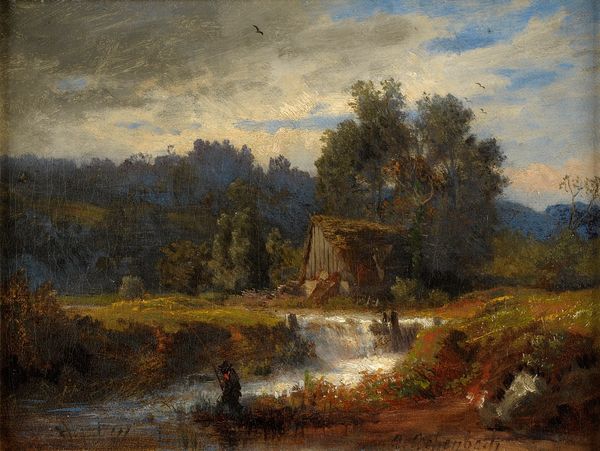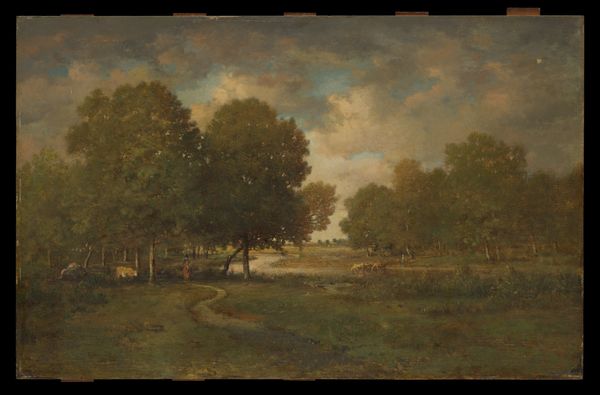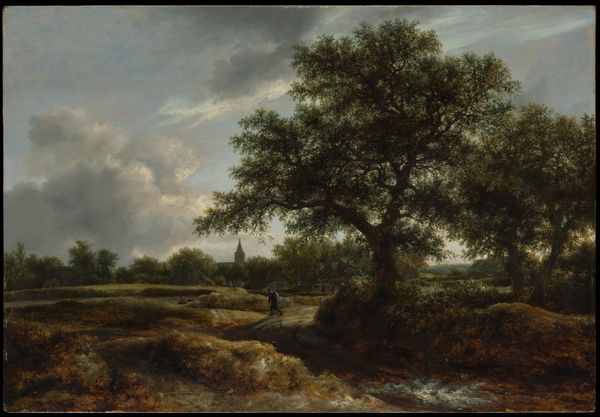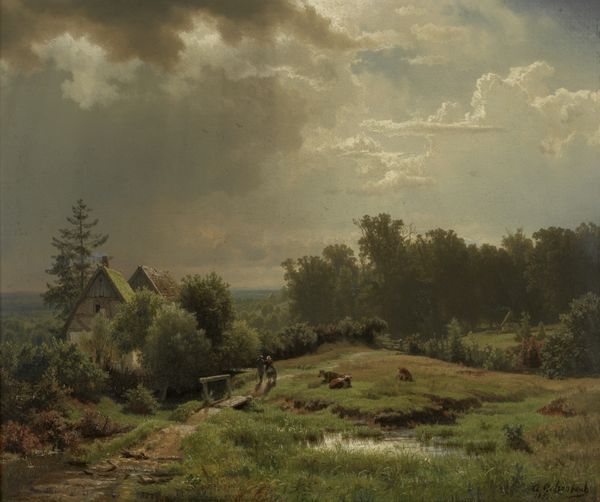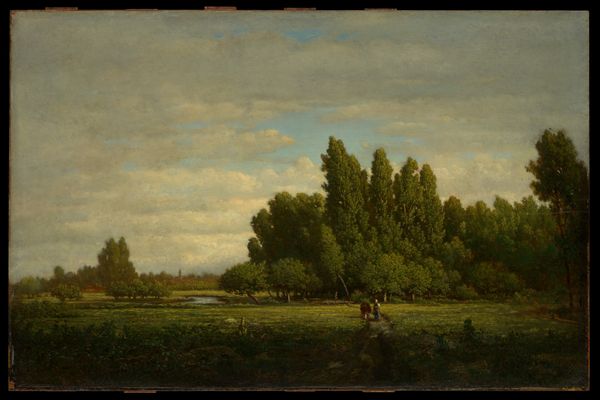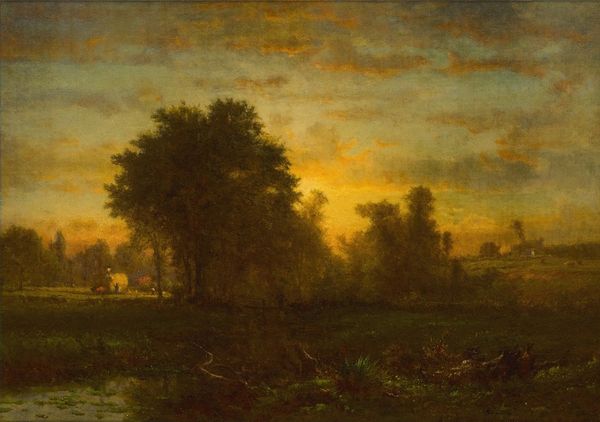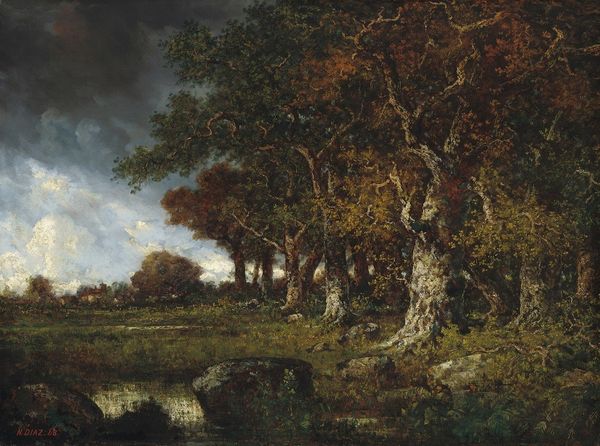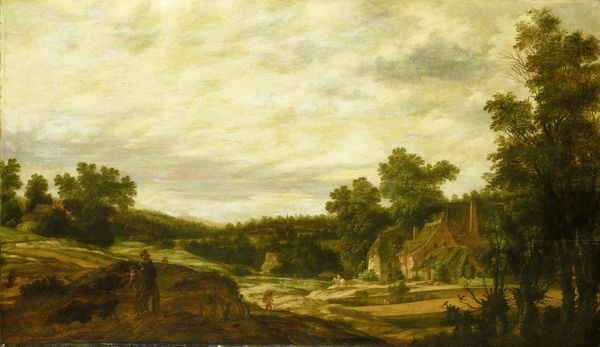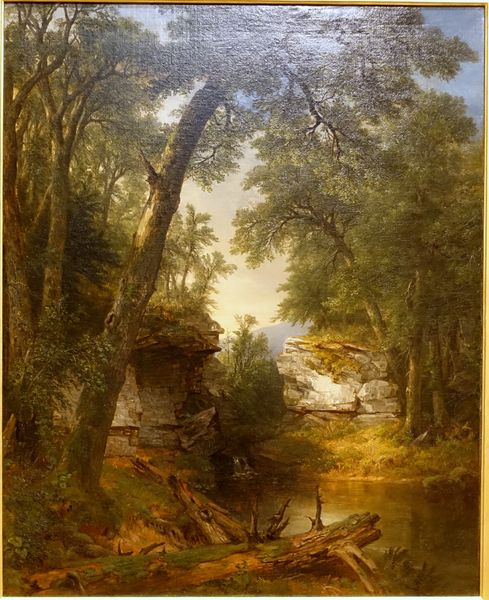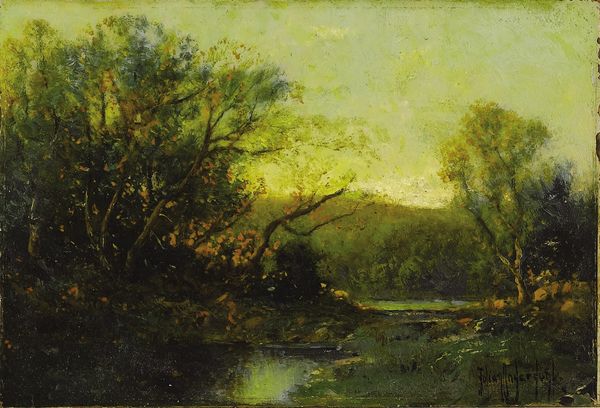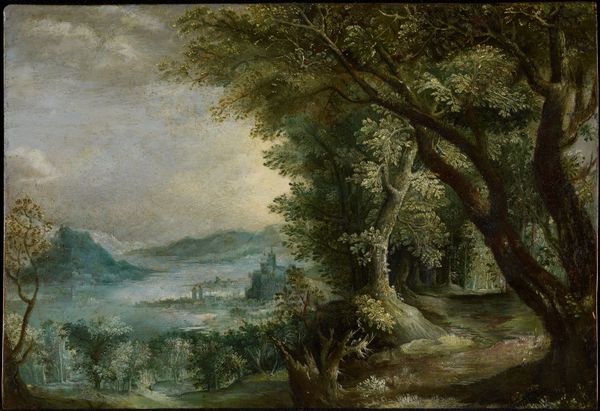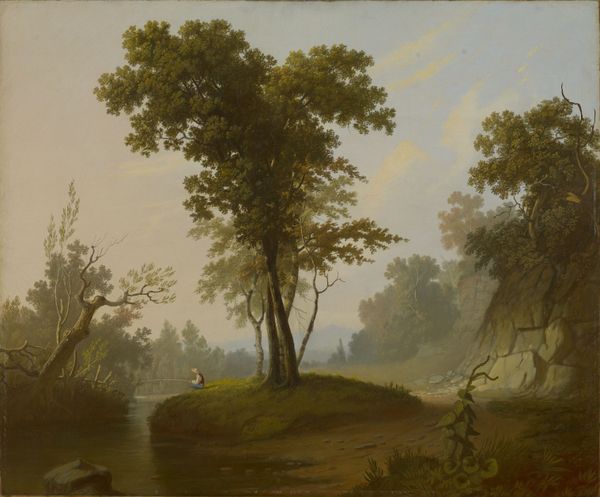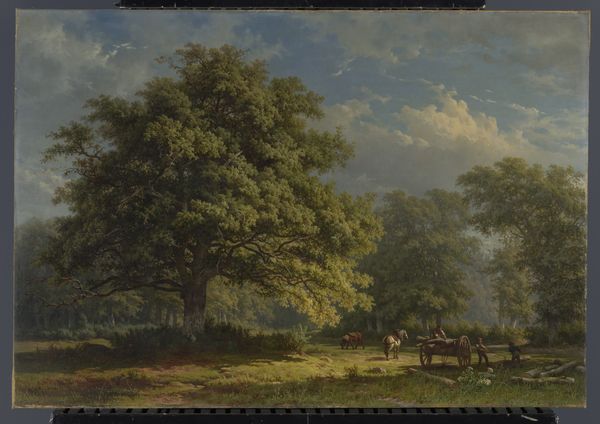
plein-air, oil-paint, oil-on-canvas
#
plein-air
#
oil-paint
#
landscape
#
nature
#
romanticism
#
france
#
oil-on-canvas
#
realism
Dimensions: 45 1/4 x 58 in. (114.9 x 147.3 cm) (image)58 3/4 x 71 in. (149.2 x 180.3 cm) (framed)
Copyright: Public Domain
Curator: Before us is "Caretaker's Cottage in the Forest of Compiegne," an oil on canvas painted by Paul Huet in 1826. It is currently held in the collection of the Minneapolis Institute of Art. Editor: It's… peaceful. A little melancholy perhaps? The cottage feels secluded, almost swallowed by the encroaching forest. There is an isolation here that is somewhat familiar. Curator: Huet was a prominent figure in the Romantic movement, known for his landscape paintings. The location itself, the Forest of Compiegne, held symbolic weight in French history, once a royal hunting ground and a place of significant political gatherings. Editor: Yes, and that context provides such a rich counterpoint to the intimacy of this piece. This forest served as a playground for nobility, while the painting draws us into the secluded home and life of what most likely are peasants. Who might the caretaker have been? Did Huet engage with the locals while creating this piece? Curator: Possibly, as he often painted "en plein air," giving him opportunities for social interaction. One can imagine Huet seeking out this kind of raw encounter, challenging the Salon's established aesthetic codes. It presents a rural space unburdened by industrial advancement. Editor: But it also speaks to the uneven distribution of space. Even here, in what is ostensibly a wild space, class divisions carve into it. How are our identities affected when we can so rarely feel solitude outside of capitalistic social pressure? Who are our "caretakers"? The cottage might feel "swallowed" to reflect this imbalance. Curator: Perhaps Huet found a unique freedom to embrace this wildness in his own artistic practice and in representing that place with the Romantic spirit of finding a common ground. This piece, with its exploration of the everyday rural landscape, was indeed quite radical for its time. Editor: Yes, and viewing it now can remind us how power and even access to so-called “nature” play out, and to be aware that they influence not only where we physically find ourselves but also who we can become in relation to it. Curator: Thank you for this. Seeing it from this perspective indeed expands how we consider not only this work by Huet, but also Romanticism and landscape painting as a whole. Editor: Thank you for highlighting these important social dimensions in order to help our audience engage with art in a fresh light!
